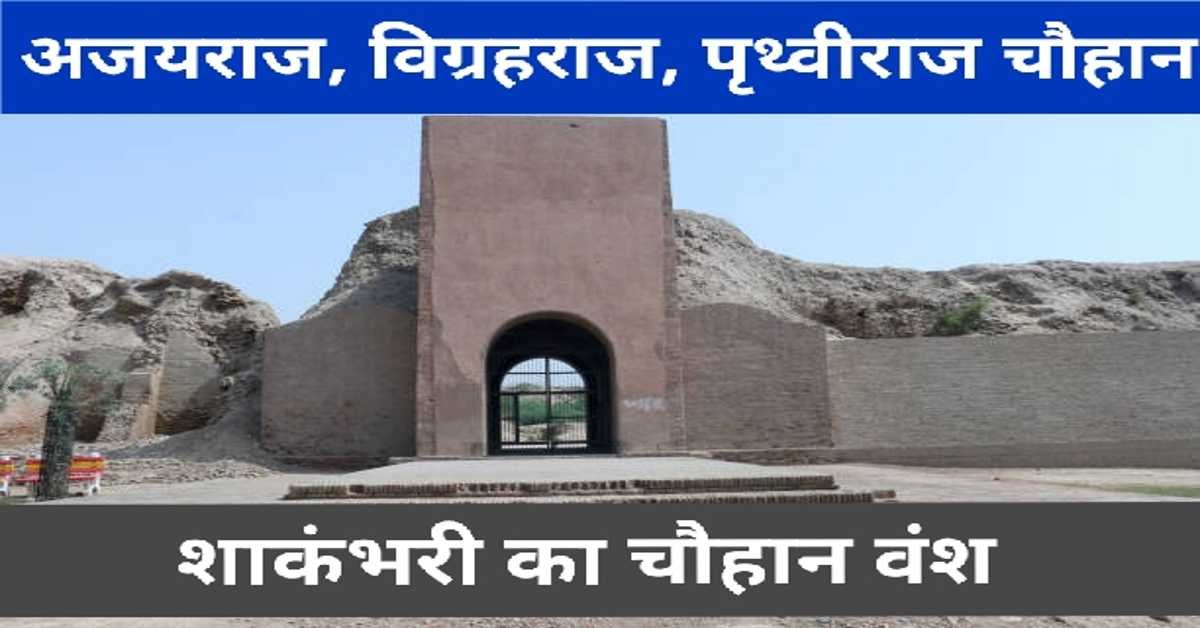
भारत का इतिहास : सिंधु सभ्यता के प्रमुख स्थल || History of India: Major sites of Indus Civilization
Harappa: This city was first discovered in the discovery of Indus Valley Civilization. It was discovered in 1921 AD . The city is situated on the left bank of the river Ravi. It is in the Montgomery district of present-day Punjab province of Pakistan. A scholar named 'Stuart Piggat' called it 'semi-industrial city' . They called Harappa and Mohenjodaro as 'twin capital of a vast empire' . A large part of the Harappan residents used to engage in technical products, trade and religion. The fort was built on the west side to protect the city. This fort is 415 m long and 195 m wide. The mound on which this fort is built is called 'Mount A B' by a scholar named 'Wheeler' .
मोहनजोदड़ो : मोहनजोदड़ो का सिंधी भाषा में शाब्दिक अर्थ 'मृतकों का टीला' होता है। यह सिंधु नदी के तट पर स्थित है। यह वर्तमान पाकिस्तान के लरकाना जिले में है। सबसे पहले इसकी खोज राखल दास बनर्जी ने सन् 1922 ईस्वी में की थी। 'विशाल स्नानागार' मोहनजोदड़ो का सर्वाधिक महत्वपूर्ण स्थान है। यह सार्वजनिक स्थल हुआ करता था। मोहनजोदड़ो की शासन व्यवस्था राजतंत्रात्मक ना होकर जनतंत्रात्मक थी। इस नगर के केंद्रीय खुले प्रांगण के मध्य जलकुंड अथवा जलाशय बना है। हड़प्पा वासी ताँबे और टीन को मिलाकर काँसा बनाते थे एवं उसका उपयोग करते थे। मोहनजोदड़ो से काँसे से की एक नर्तकी की मूर्ति प्राप्त हुई है। यह मूर्ति द्रवी मोम विधि से बनाई गई थी।
Mohenjodaro: Mohenjodaro literally means 'mound of the dead' in Sindhi language. It is situated on the banks of the Indus River. It is in Larkana district of present-day Pakistan. It was first discovered by Rakhal Das Banerjee in 1922 AD . The 'huge bath' is the most important place of Mohenjodaro. It used to be a public place. Mohenjodaro's system of governance was democratic rather than monarchical. There is a reservoir or reservoir in the middle of the central open courtyard of this city. Harappans used to make bronze using copper and tin and use it. A statue of a dancer from Kanse has been obtained from Mohenjodaro. This idol was made using the Dravi wax method.
राखीगढ़ी : यह हड़प्पा का एक प्रमुख पुरातात्विक स्थल है। यह वर्तमान हरियाणा के हिसार जि़ले में स्थित है। इस स्थल से अन्नागार तथा रक्षा प्राचीर के साक्ष्य प्राप्त हुए हैं। मई 2012 में 'ग्लोबल हैरिटेज फंड' ने इसे एशिया के 10 ऐसे विरासत स्थलों की सूची में सम्मिलित किया जिनके नष्ट होने का खतरा है। अतः इसकी सुरक्षा आवश्यक है।
Rakhigarhi: It is a major archaeological site of Harappa. It is located in Hisar district of present day Haryana. Evidence of Annagar and defense ramparts have been obtained from this site. In May 2012, 'Global Heritage Fund' included it in the list of 10 heritage sites in Asia that are in danger of being destroyed. Hence its safety is essential.
बनावली : हड़प्पा के इस पुरातात्विक स्थल की खोज सन् 1973 ईस्वी में आर. एस. बिष्ट नामक विद्वान ने की थी। यह हरियाणा के फतेहाबाद जि़ले में स्थित है। इस स्थान में जल निकास प्रणाली नहीं थी। यहाँ से मिट्टी का हल प्राप्त हुआ है। बनावली में अधिक मात्रा में जौ प्राप्त हुआ है। यहाँ से कालीबंगा की तरह हड़प्पा पूर्व तथा हड़प्पा कालीन दोनों संस्कृतियों के अवशेष प्राप्त हुए हैं।
Banavali: The discovery of this archaeological site of Harappa in 1973 AD R. s. A scholar named Bisht did it. It is located in the Fatehabad district of Haryana. This place did not have a drainage system. A soil solution has been obtained from here. Barley is found in abundance in Banavali. From here, remains of both Harappan and Harappan cultures have been found, like Kalibanga.
धौलावीरा : इस स्थल की खोज सन् 1967 ईस्वी में जे.पी. जोशी ने की थी। यह गुजरात के कच्छ जिले के भचाऊ तालुका में है। सिंधु लिपि के 10 बड़े चिन्हों से निर्मित शिलालेख इस स्थल से प्राप्त हुआ है। यह हड़प्पा सभ्यता की महत्वपूर्ण उपलब्धि है। इस लिपि को अभी तक पढ़ा नहीं जा सका है। धौलावीरा में निवास करने वाले व्यक्ति जल संरक्षण की तकनीक को जानते थे। धौलावीरा से सिंधु सभ्यता का एकमात्र 'स्टेडियम' (खेल का मैदान) प्राप्त हुआ है। यहाँ के नगरों को तीन भागों में बाँटा जा सकता है - दुर्गाभाग, मध्यम नगर और निचला नगर।
Dhaulavira: This site was discovered in JP in 1967 AD . Joshi did it. It is in Bhachau taluka of Kutch district of Gujarat. An inscription composed of 10 major symbols of the Indus script is found from this site. This is an important achievement of the Harappan civilization. This script has not been read yet. The people living in Dhaulavira knew the technique of water conservation. The only 'stadium' (playground) of the Indus civilization is derived from Dhaulavira. The cities here can be divided into three parts - Durgabhaga, Madhyam Nagar and Lower Town .
कालीबंगा : हड़प्पा के इस नगर की खोज सन् 1951 ई. में अमलानंद घोष ने की थी। इसके कुछ समय पश्चात सन् 1961 ईस्वी में बी. बी. लाल तथा बी. के. थापर के निर्देशन में इस स्थल की व्यापक खुदाई की गई थी। यह राजस्थान के गंगानगर जिले में घग्गर नदी के बाएँ तट पर स्थित है। कालीबंगा का शाब्दिक अर्थ 'काले रंग की चूड़ियाँ' होता है। इस नगर से जुते हुए खेत के साक्ष्य प्राप्त हुए हैं। कालीबंगा के भवनों का निर्माण कच्ची ईंटों से हुआ था। यहाँ अलंकृत ईंटों के प्रयोग के साक्ष्य भी मिले हैं। यहाँ पर शवों के अंतिम संस्कार के लिए तीन विधियों के प्रमाण मिले हैं। ये विधियाँ हैं : पूर्ण समाधीकरण, आंशिक समाधीकरण और दाह - संस्कार।
Kalibanga: This city of Harappa was discovered by Amalananda Ghosh in 1951 AD . was. Some time after this, in 1961 AD B. B. Red and b. K. The site was extensively excavated under Thapar's direction. It is located on the left bank of the Ghaggar River in Ganganagar district of Rajasthan. Kalibanga literally means 'black bangles' . Evidence has been obtained of the farm connecting to this city. The buildings of Kalibanga were constructed of raw bricks. Evidence of use of ornate bricks has also been found here. There is evidence of three methods for cremation of dead bodies. These methods are: complete solidification, partial fixation and cremation .
लोथल : इस स्थल की खोज सर्वप्रथम डॉ एस. आर. राव ने सन् 1955 ईस्वी में की थी। यह स्थल गुजरात के अहमदाबाद जि़ले के सगरवाला ग्राम के पास दक्षिण में भोगवा नदी के तट पर अवस्थित है। लोथल में नगर को दो भागों में नहीं बाँटा गया था। केवल एक ही रक्षा प्राचीर से पूरे नगर को दुर्गीकृत किया गया था। लोथल एक प्रमुख बंदरगाह था, जो पश्चिमी एशिया से व्यापार के लिए प्रमुख स्थल था।
Lothal: First search of this site is Dr. S. R. Rao did it in 1955 AD . The site is located on the banks of river Bhogwa in the south near Sagarawala Village in Ahmedabad district of Gujarat. In Lothal, the city was not divided into two parts. The entire city was degraded by only one defense rampart. Lothal was a major port, a major destination for trade from West Asia.
चन्हूदड़ो : यह सिंधु नगर मोहनजोदड़ो से 130 किलोमीटर दक्षिण - पूर्व दिशा में स्थित है। यह वर्तमान पाकिस्तान में है। इसकी खोज 1934 ईस्वी में एन. गोपाल मजूमदार द्वारा की गई थी। इसके कुछ समय बाद 1935 ईस्वी में अर्नेट मैके नामक विद्वान द्वारा इसका उत्खनन करवाया गया था। यह एकमात्र ऐसा पुरास्थल है जहाँ से वक्राकार ईंटें प्राप्त हुई हैं। यहाँ से किसी दुर्ग का अवशेष प्राप्त नहीं हुआ है। यहां से पूर्वोत्तर हड़प्पाकालीन संस्कृति के अवशेष प्राप्त हुए हैं। यह नगर औद्योगिक केंद्र था। यहाँ पर मणिकारी, मुहर बनाने, भार - माप के बटखरे बनाने का काम होता था। अर्नेस्ट मैके ने यहाँ से मनका बनाने का कारखाना और भट्टी को खोजा है।
Chanhudaro: It is located 130 km southeast direction from Indus Nagar Mohenjodaro. It is in present-day Pakistan. N. in its discovery 1934 AD . Gopal Majumdar. Shortly afterwards it was excavated in 1935 AD by a scholar named Arnett McKay. It is the only archaeological site from where curved bricks have been obtained. The remains of any fort have not been obtained from here. Remains of Northeast Harappan culture have been found from here. This city was the industrial center. Manikari, seal making, weights and weights were used here. Ernest McKay discovers a bead making factory and furnace from here.
RF competition
INFOSRF.COM
संबंधित जानकारी नीचे देखें।
(Watch related information below) 👇🏻

आशा है, उपरोक्त जानकारी उपयोगी एवं महत्वपूर्ण होगी।
(I hope the above information will be useful and important. )
Thank you.
लेखक
(Writer)
infosrf.com


.jpg)






(Teacher)
Posted on March 07, 2021 02:03AM from ,
Nice